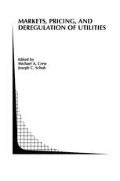Abstract
We stand at a crossroads in the local telephone market and its regulation. Six years ago the nation codified a new vision of the industry, towards competition and away from the prior franchise monopoly.1 Along with that new vision came two instructions for regulators — to embrace certain transitional forms of regulation to stimulate local competition, while also to phase out regulatory legacies that would stand in the way of the new competitive world.2 However, many post-mortem analyses of the Telecommunications Act of 1996 (Act) have expressed disappointment at promises not fulfilled, particularly with regard to local competition.3 As well, many also criticize the Act’s regulatory burdens, costs, and delays. While common in larger cities and for many business customers, alternative wireline phone service is offered in relatively few residential neighborhoods. Likewise, rather than the “deregulation” often described in the popular press, the past six years have seen an expansion of detailed economic regulatory oversight perhaps unprecedented for any American industry.4
Helpful comments were received from Michael Crew, Richard Clarke of AT&T, Michael Pelcovits of WorldCom, and others at Verizon and at the Rutgers’ Center for Research in Regulated Industries May, 2002 Research Seminar. Opinions expressed and any errors contained are the responsibility of the authors and not the commenters or their organizations
The Telecommunications Act of 1996 became law on February 8, 1996
Its Conference Report identifies the Act as creating a “pro-competitive, de-regulatory national policy framework.” The Act requires the Federal Communications Commission (FCC) to oversee unbundling of incumbent wireline providers’ networks (Sections 251–252), and to forbear from applying existing regulations that have become unnecessary, including preempting subsequent state—level efforts to enforce them (Sections 401–402).
E.g., TR Daily 2002a.
For example, the regulatory regimen of mandated unbundling at forward-looking TELRIC prices under strict supervision of wholesale operational performance appears unique to the local telephone industry. To our knowledge, while a number of industries have been subject to unbundling requirements, no such package of measures has been applied to other industries in regulatory transition (e.g. airlines, natural gas, trucking, electricity, wireless telephony, cable TV).
Access this chapter
Tax calculation will be finalised at checkout
Purchases are for personal use only
Preview
Unable to display preview. Download preview PDF.
References
ALTS. 2002. “The State of Local Competition 2002,” Association for Local Telecommunications Services Annual Report (Washington, D.C., April, 2002).
Breyer, Stephen. 1999. United States Supreme Court: AT&T Corp. et al. v. Iowa Utilities Board et al. (No. 97–826), January 25, 1999, Opinion of Justice Breyer.
Cairncross, Frances. 1997. The Death of Distance (Harvard Business School Press, 1997).
CSFB. 2000. “Telecom Services — CLECs” Credit Suisse First Boston Equity Research (December 14, 2000)
CSFB. 2001a. “Telecom Services — CLECs,” Credit Suisse First Boston Equity Research (March, 2001).
CSFB. 2001b. “Broadwing,” Credit Suisse First Boston Equity Research (April 23, 2001).
CSFB. 2001c. “Telecom Services — CLECs,” Credit Suisse First Boston Equity Research (May 3, 2001).
FCC. 2001. Trends in Telephone Service, Federal Communications Commission (August 1, 2001).
FCC. 2002. “Local Competition Status as of June 30, 2001,” Federal Communications Commission (February, 2002).
FPSC. 2001. Florida Public Service Commission Order No. PSC-01–2178-FOF-TP (November 6, 2001).
Harris, Robert G. 2000. “Direct Testimony of Dr. Robert G. Harris,” Ameritech Illinois Exhibit 4.0, Illinois Commerce Commission Docket No. 98–0252, Schedule 2 (June 30, 2000).
Hausman, Jerry, Tardiff, Timothy, and Alexander Belinfante. 1993. The Effects of the Breakup of AT&T on Telephone Penetration in the United States.” American Economic Review (May): 178–184.
Hausman, Jerry. 1998. “The Effect of Sunk Costs in Telecommunications Regulation.” October, 1998 (mimeo).
Henderson, J. Stephen and Robert E. Burns. 1989. “An Economic and Legal Analysis of Undue Price Discrimination,” National Regulatory Research Institute report number NRRI 89–1 (August).
Internet Week. 2001. “FCC Chief: Deregulation Will Grease Competition,” Internet Week (February 7, 2001; (http://www.internetweek.com/story/INW20010207S0001).
Jorde, Thomas, J. Gregory Sidak, and David Teece. 2000. “Innovation, Investment and Unbundling.” Yale Journal on Regulation 17 (No. 1, Winter).
Kaserman, David L. and John W. Mayo. 1994. “Cross-Subsidies in Telecommunications: Roadblocks on the Road to More Intelligent Telephone Pricing,” Yale Journal on Regulation 11 (1): 119–147.
Leap Wireless 2002a. “Leap Reports Results for First Fiscal Quarter of 2002,” Leap Wireless International, Inc. press release (April 24, 2002).
Leap Wireless 2002b. 2001 Annual Report, Leap Wireless International, Inc.
Leone, Robert A. 1986. Who Profits: Winners, Losers and Government Regulation. Basic Books.
Parsons, Steve G. 1994. “Seven Years After Kahn and Shew: Lingering Myths on Costs and Pricing Telephone Service.” Yale Journal on Regulation 11: 149–170.
Pociask, Steven. 2001. “Structural Separation: Consequences on Michigan Customers,” TeleNomic Research, LLC (May 9, 2001), mimeo.
PUCO. 1999. Opinion and Order in Case #98–1082-TP-AMT, Public Utilities Commission of Ohio (April 8, 1999).
Silicon Valley/San Jose Business Journal. 2001. “Cell phone penetration tops 50 percent,” Silicon Valley/San Jose Business Journal, (September 26, 2001; http://sanjose.bizjoumals.com/sanjose/stories/2001/09/24/daily32.html).
Taylor, William E. 2000. “Testimony of William E. Taylor.” New Jersey Board of Public Utilities Docket No. T099120934 (May 18, 2000).
Teitzel, David L. 2001. “Qwest Corporation’s Affidavit of David L. Teitzel, Track A and Public Interest.” Minnesota PUC Docket No. P-421/CI-01–1373 (December 10, 2001).
TR Daily. 2002a. “Industry Groups Gripe for Telecom Act’s Anniversary, “TR Daily (February 7, 2002).
TR Daily. 2002b. “Cox Communications Bullish On 2002 Growth, Sees No Slowdown in New Customer Adds,” TR Daily (February 12, 2002).
Wall Street Journal. 2001. “Telecom Debt Debacle Could Lead To Losses of Historic Proportions,” Wall Street Journal (May 11), page 1.
Author information
Authors and Affiliations
Editor information
Editors and Affiliations
Rights and permissions
Copyright information
© 2002 Springer Science+Business Media New York
About this chapter
Cite this chapter
Danner, C.R., Wilk, G.M. (2002). The Next Stage of Local Telephone Regulatory Reform. In: Crew, M.A., Schuh, J.C. (eds) Markets, Pricing, and Deregulation of Utilities. Topics in Regulatory Economics and Policy Series, vol 40. Springer, Boston, MA. https://doi.org/10.1007/978-1-4615-0877-9_2
Download citation
DOI: https://doi.org/10.1007/978-1-4615-0877-9_2
Publisher Name: Springer, Boston, MA
Print ISBN: 978-1-4613-5283-9
Online ISBN: 978-1-4615-0877-9
eBook Packages: Springer Book Archive

